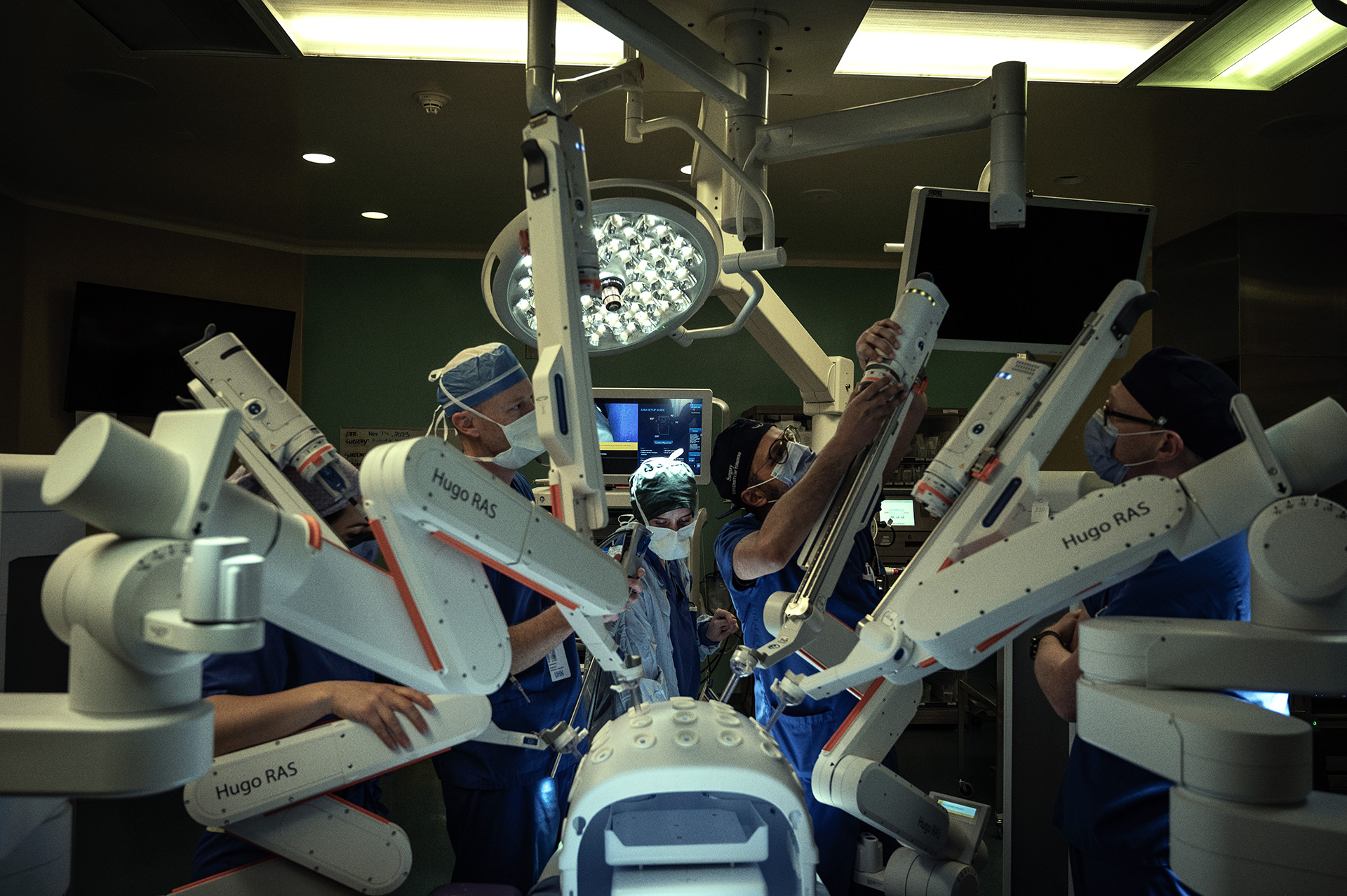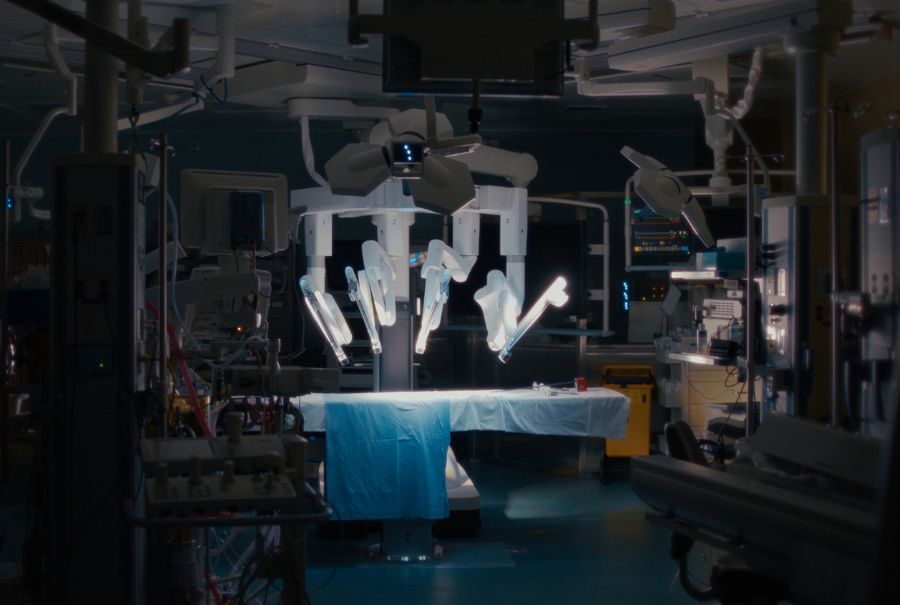
UHNITED with robotic arms in the operating room, TeamUHN is using state-of-the-art technology to reduce wait times, train next-generation surgical teams and help patients recover faster and get home quicker.
Extending the capabilities of our eyes and hands
Working with leading-edge robotic technology has included the use of the Da Vinci Xi robots, and a first-of-its-kind North American procedure using the Medtronic Hugo robot. Dramatically extending the capabilities of surgeons’ eyes and hands, the Hugo at UHN is the first clinical robot of its kind in North America. This makes UHN one of the only organizations on the continent that can use the Hugo to treat patients.
By enabling surgeons to perform to the very best of their abilities, access to this new equipment has resulted in growing excitement in the operating room. Rather than hunched over OR tables, surgeons are in the driver’s seat of ultramodern robots, sitting comfortably at consoles alongside their patients and piloting several independent robotic arms. Combined with the experience of our world-leading surgical teams, the elegance of this technology generally results in smaller incisions, less blood loss, faster recovery and less need for pain medication – getting patients back to a normal life as soon as possible.
Canadian-trained leaders for the global stage
Multidisciplinary teams train to use these advanced robots at the Temerty Advanced Surgical Education and Simulation Centre. Located at The Michener Institute at UHN, this makes UHN the first health care institution in the country to provide a structured robotic-assisted surgery curriculum. In addition, the centre’s ongoing work in telecommunications and simulation promises to further impact patient care by teaching surgeons around the world about using this technology.
“Team work is making dreams work,” says Dr. Thomas Forbes, Surgeon-in-Chief, Sprott Department of Surgery, UHN. “Our team-based approach to robotic surgery is very important, and there’s been specific training with respect to our nurses, our technicians and our surgeons, and they’re all world leaders.”
Continual research and innovation
Robots are also opening doors for research and innovation, presenting opportunities for incorporating surgical technologies such as advanced imaging, artificial intelligence (AI) and augmented reality (AR). While AI enables computers to interpret, analyze, and understand visual information in ways that are increasingly accurate, AR superimposes digital information such as computer-generated images, videos or 3D models in real time.
A foundation for surgical firsts
With more patients going home with minimal scars and fewer days in hospital, the potential of surgeons and robots promises to propel TeamUHN to even greater surgical success. “Incorporating the latest robotics into the operating room builds on a history of world-first innovation at UHN, ensuring the best possible patient care and procedure results by putting the best possible tools in the hands of the most qualified surgeons,” says Dr. Fayez Quereshy, Clinical Vice President, UHN. “Combined with creating a pathway to train the next generation of surgeons in this technology, we are having an enormous impact on improving patient care through the efforts of teams who are learning at UHN – together.”

No one ever changed the world on their own but when the bright minds at UHN work together with donors we can redefine the world of health care together.






